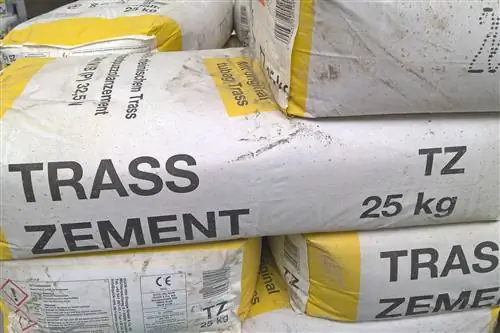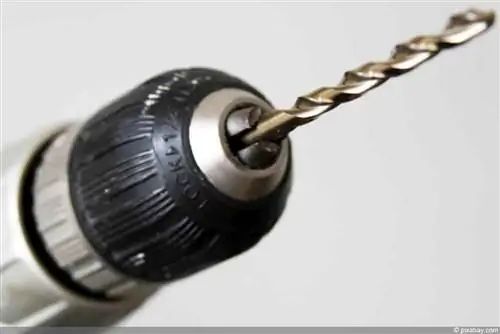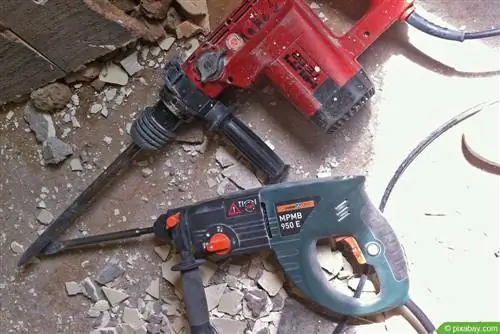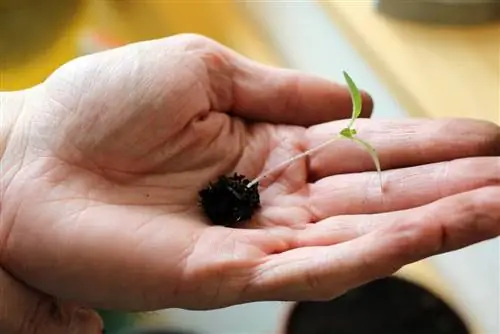- Author admin [email protected].
- Public 2023-12-17 03:39.
- Last modified 2025-01-24 12:45.
Trass cement is used as a binding agent to make cements or mortars more resistant in various aspects. Depending on the intended use, Trass offers special properties that can be used effectively.
Composition
Trass cement mixtures, as the name suggests, contain a certain amount of trass. Trass is a naturally occurring pozzolan, primarily made from volcanic rock. Pozzolans are rocks that contain the following materials and therefore have increased reactivity:
- Silica
- Clay
- Organosilicon compounds
- Aluminum compounds
Silicic acid is usually present in quantities of at least 50 percent and is the main component of the rock. Trass ensures an improvement in certain properties in the cement compared to classic mixtures. But it is not the only material in the mix. To mix trass cement, other ingredients are essential:
- burnt lime (ground)
- Sound
- optional: marl
Differences to cement
The question often arises as to what distinguishes trass cement from classic cement. Since trass cement mixtures are an “extended” type of cement, this question needs to be examined in more detail. The most important difference is the increased density. In cements, trass ensures that the mixture has a denser structure. Since Trass also has significantly fewer pores, in combination with the density, an almost closed and elastic surface is created when mixed, which protects against stress cracks. This has some advantages that classic cements do not offer:
- long-lasting
- waterproof
- low cleaning effort
Above all, the waterproofness is a big advantage. Thanks to the pore closure, no moisture gets into the material, which cannot be guaranteed with normal cements. This property also ensures that there is significantly less frost damage in winter. Since trass also has lime-binding properties, the rock protects against lime efflorescence, which is often a problem for outdoor concrete. Even in regions with humid weather, trass cement works effectively against this problem. Not only lime efflorescence is prevented. In contrast to cement, trass cement mixtures reduce the risk of discoloration in natural stone, which can occur due to the following proportions in the stone:
- metallic
- organic
Note:
The only disadvantage of trass cement mixtures is the significantly longer curing time. This must be taken into account after application.

Application
Due to their special properties, cements with trass content are suitable for a variety of applications. They are particularly effective for mixing mortars that are waterproof. Especially outdoors, mortar and concrete with trass are ideal for various areas of application that often or permanently come into contact with water:
- Terraces
- Paving surfaces (bound)
- Groout
- Water basin lining (e.g. garden pond)
- Monument restoration
Trass cement mixtures are popular for processing natural and concrete stones. The reason for this is the effective binding of lime. It protects the stones from limescale efflorescence, which can often occur due to moisture outdoors. In addition to these areas of application, there are other possible uses of trass cement mixtures that you can take advantage of:
- Backfills
- Stone Stairs
- Screed
- Facing masonry
Costs
If you decide to use trass cement, you should consider the costs before purchasing. Fortunately, these can be determined quite easily because the special cement is already available as a mixture. This means you can easily compare individual product prices at a hardware store or online retailer. Trass cement mixtures are most often offered in five or 25 kilogram bags, unless you order larger quantities directly from a building materials store. If you are interested in the average price, you should take a look at the following list:
- 5 kg bag: 5 to 10 euros
- 25 kg bag: 8 to 30 euros
Note:
If you can't find trass cement bags, look for the terms composite cement, pozzolana cement or Portland composite cement. These names are more common for the particular mixture.






